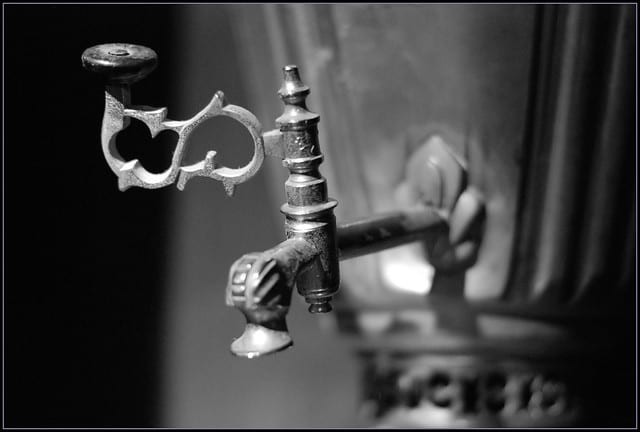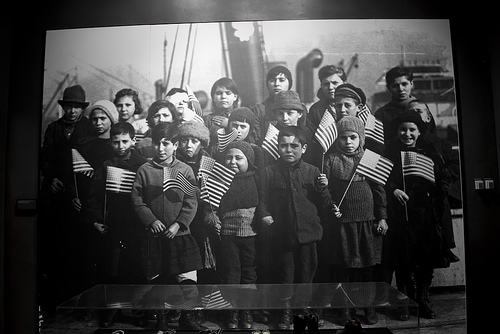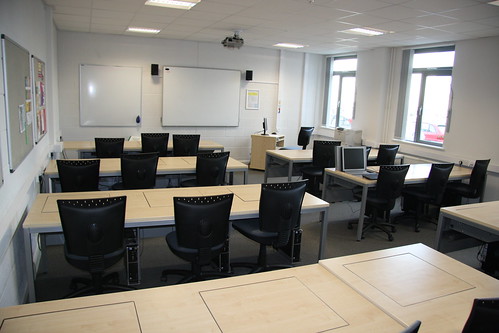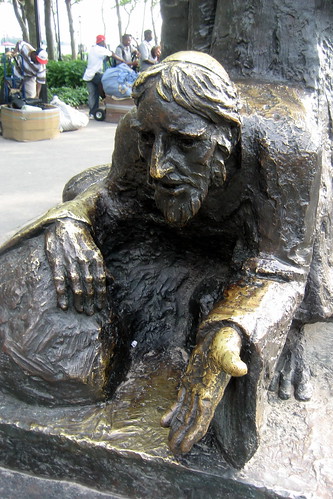I've just returned home after having spent nearly a week -- and a most stimulating one, at that -- in Charleston, South Carolina, at an NEH-sponsored Summer Institute on Southern Jewry. Hosted by the College of Charleston’s Pearlstine/Lipov Center for Southern Jewish Culture, academics from around the country gathered together to explore the impact of the South on the modern Jewish experience.
Outside, the humidity was so high you'd sweat up a storm even when standing still. But indoors, talk one sultry morning was of things that kept one warm rather than cool: of samovars, boiling water and tea.

No, we hadn't taken leave of our senses on account of the weather. Rather, prompted by the institute's thoughtful and imaginative conveners, historians Dale Rosengarten and Shari Rabin, to think about what artifacts we might have at home that reflected Jewish immigrant life, the samovar loomed large in our deliberations.
The Russian "self-boiler" also loomed large in an archival photograph from the College of Charleston’s remarkable Jewish Heritage Collection: an early 20th century pawnshop in downtown Charleston, whose dusty, uppermost shelves were lined, cheek by jowl, with one samovar after another.
A characteristically lively discussion ensued, with the institute's participants wondering aloud how the samovar might have made its arduous way from the Pale of Settlement to the Charleston Peninsula; pondering why so many immigrants lugged the bulky, unwieldy thing from the Old World to the New; and querying where they might have obtained one in the first place (At a regional fair? From a peddler?). Questions beget questions.
I'm not sure we resolved much of anything, but in this instance, as in so many others throughout the institute, it wasn't for want of trying: Conversation flowed as thickly as strong, black Russian tea. More to the point, through a welter of carefully designed and varied activities -- walking tours, site visits, digital exercises, archival research -- we sought assiduously and sensitively to grapple with issues that were as insistently present as the samovar in the homes of Jewish immigrants and their descendants: the intractability of prejudice, the institutionalization of racism, expressions of cultural anxiety, the long shadows of the past, the protocols of memorialization.
I don't know whether the participants in the summer institute will continue to keep in touch as this summer yields to another. What I do know, though, is that right now I can't stop thinking of the ways in which the search for historical truth -- usually a solo enterprise -- rendered us a community.




 I thought I'd buck that trend by having the students in my
I thought I'd buck that trend by having the students in my 